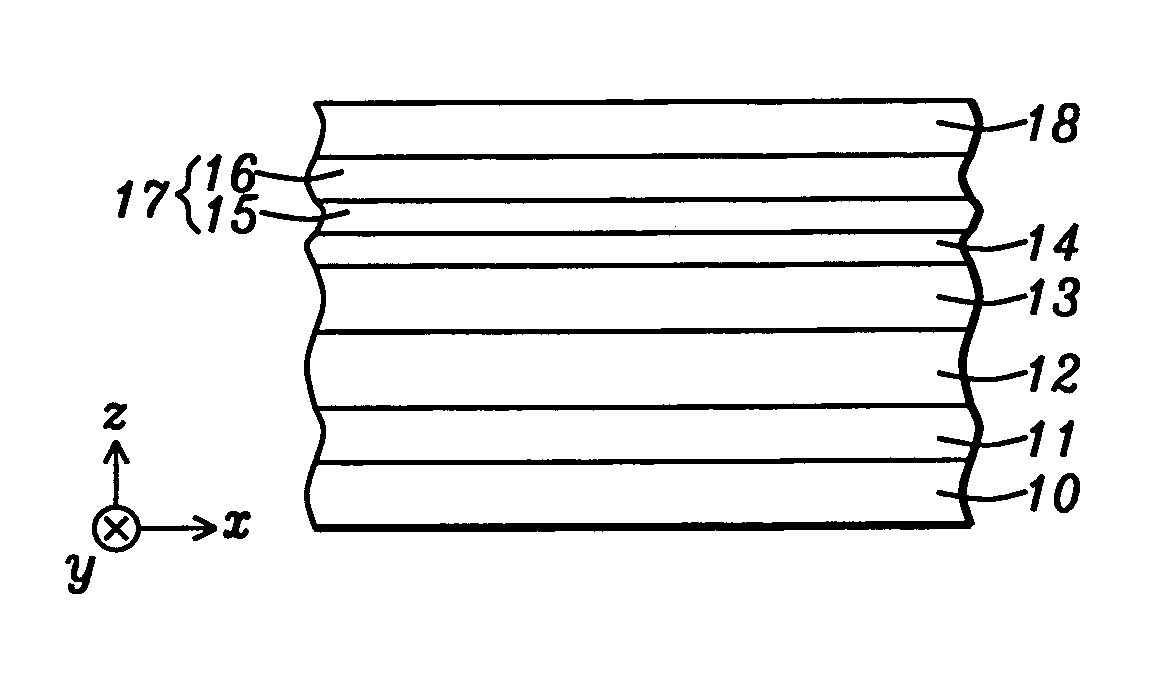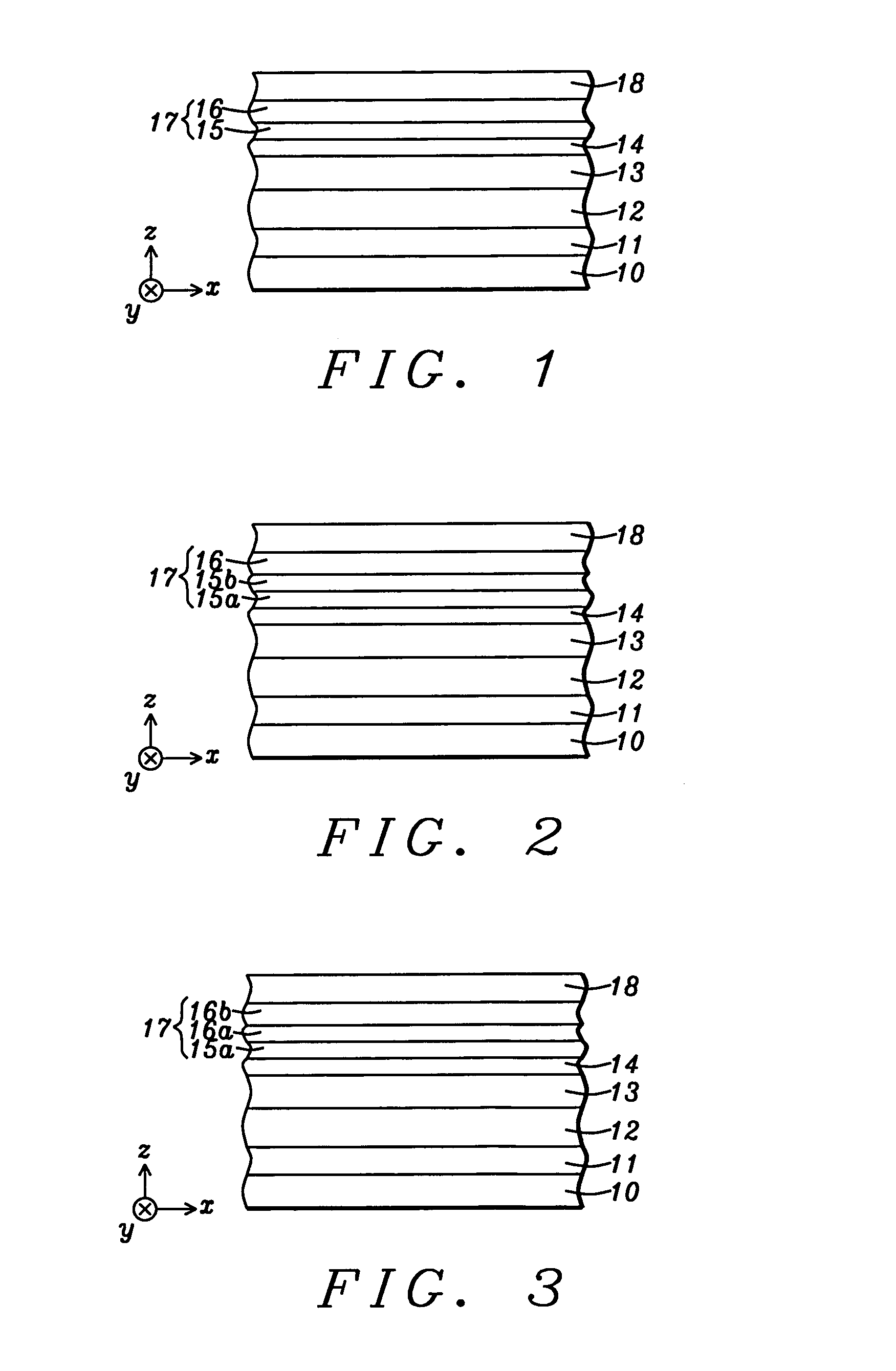Magnetic tunnel junction for MRAM applications
a magnetic tunnel junction and mram technology, applied in galvano-magnetic devices, solid-state devices, instruments, etc., can solve the problems of disadvantage, cofeb has a relatively high magnetoresistance value, and the other parameter degradation, so as to improve the bit switching characteristic of a mram
- Summary
- Abstract
- Description
- Claims
- Application Information
AI Technical Summary
Benefits of technology
Problems solved by technology
Method used
Image
Examples
first embodiment
[0026]Referring to FIG. 1, a MTJ structure is illustrated according to the present invention. The substrate 10 may be a bottom conductor layer, for example, having a thickness in the z-axis direction and with a top surface in the x,y plane. A MTJ stack of layers is now formed on the substrate 10. It should be understood that all layers in the MTJ stack may be formed in the same process tool such as an Anelva C-7100 thin film sputtering system or the like which typically includes three physical vapor deposition (PVD) chambers each having 5 targets, an oxidation chamber, and a sputter etching chamber. At least one of the PVD chambers is capable of co-sputtering. Typically, the sputter deposition process involves an argon sputter gas and the targets are made of metal or alloys to be deposited on a substrate. All MTJ layers may be formed after a single pump down of the sputter system to enhance throughput.
[0027]In the exemplary embodiment, the MTJ stack of layers is fabricated on the su...
embodiment 2
[0043]In all examples except reference 2, a NiRFeSHfT layer where R=75, S=10, and T=15 was deposited by co-sputtering a NiRFeS target and a Hf target in an Anelva 7100 sputter deposition system. With regard to the example representing embodiment 2, the NiFe layer has a Ni content of 88 atomic %. References 1-3 include free layer stacks previously built by the inventors for other experiments. TMR ratios for the examples representing embodiments 1 and 2 demonstrate that dR / R is as high as the value in other designs such as reference 1. One advantage of the present invention as found in the embodiments described herein is a dramatic reduction in the number of shorted bits in MRAM devices.
[0044]Referring to FIG. 4, the MTJs of Embodiment 1 and Reference 1 above were incorporated in 4 Mb MRAM chips. The table in FIG. 4 shows the number of shorted bits per 0.5 Mb section of a 4 Mb chip, measured for multiple chips across an 8 inch wafer. Each number shown by column and row corresponds to ...
PUM
| Property | Measurement | Unit |
|---|---|---|
| thickness | aaaaa | aaaaa |
| thickness | aaaaa | aaaaa |
| thickness | aaaaa | aaaaa |
Abstract
Description
Claims
Application Information
 Login to View More
Login to View More - R&D
- Intellectual Property
- Life Sciences
- Materials
- Tech Scout
- Unparalleled Data Quality
- Higher Quality Content
- 60% Fewer Hallucinations
Browse by: Latest US Patents, China's latest patents, Technical Efficacy Thesaurus, Application Domain, Technology Topic, Popular Technical Reports.
© 2025 PatSnap. All rights reserved.Legal|Privacy policy|Modern Slavery Act Transparency Statement|Sitemap|About US| Contact US: help@patsnap.com



